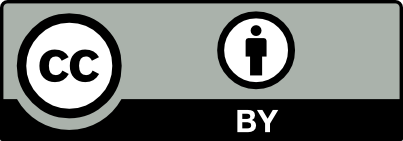Checking for non-preferred file/folder path names (may take a long time depending on the number of files/folders) ...
This resource contains some files/folders that have non-preferred characters in their name. Show non-conforming files/folders.
This resource contains content types with files that need to be updated to match with metadata changes. Show content type files that need updating.
| Authors: |
|
|
|---|---|---|
| Owners: |
|
This resource does not have an owner who is an active HydroShare user. Contact CUAHSI (help@cuahsi.org) for information on this resource. |
| Type: | Resource | |
| Storage: | The size of this resource is 71.2 KB | |
| Created: | Aug 07, 2025 at 11:29 a.m. (UTC) | |
| Last updated: | Aug 12, 2025 at 10:09 a.m. (UTC) (Metadata update) | |
| Published date: | Aug 08, 2025 at 3:11 p.m. (UTC) | |
| DOI: | 10.4211/hs.dd3e86e079cb4d2497f3465d26bc2cc7 | |
| Citation: | See how to cite this resource |
| Sharing Status: | Published |
|---|---|
| Views: | 528 |
| Downloads: | 14 |
| +1 Votes: | Be the first one to this. |
| Comments: | No comments (yet) |
Abstract
The distribution of groundwater recharge can be estimated using several methods, but generally, the most appropriate method depends on both physical and study objectives. In this case, a large area in Southern Portugal has been subject to a strong intensification of agricultural practices. This was due to the construction of the Alqueva dam, the largest dam and artificial lake (250 km2) in Western Europe, which has caused a significant land-use change process in recent years. One of the most critical observed effects is the soil tillage process, which causes a great impact on runoff and recharge patterns and consequent soil erosion. For the assessment of groundwater recharge changes in this area, this study intended to make a high-resolution estimation based on drone imagery analysis. Accordingly, two high-resolution digital elevation models (DEM) with 7 cm resolution were created using photogrammetric processing of the images collected by drone. In order to have a representative land-use change, these images were collected before and after soil tillage. The image acquisition process was based on a pre-programmed drone (Unmanned Aerial Vehicle –UAV) with the following flight specifications: 90% frontal overlap and 70% lateral. As the research intended to have a high-accuracy DEM of the soil surface, two perpendicular flights were made. After the photogrammetric processing, a high-resolution output of topography was obtained prior to and after soil tillage. To assess the groundwater recharge changes, the WetSpass-M model was used for the two time frames. This model has the ability to simulate spatially distributed recharge, surface runoff, and evapotranspiration for averaged conditions and adaptive scales or resolutions. Depending on several inputs such as land cover, soil texture, hydrometeorological parameters and topography, the latter stands in this case as the main change between the two time frames. Thus, the groundwater recharge changes were estimated for an area of 55 ha, from which 18.7 ha were subjected to soil tillage. The remaining 36.3 ha were used as validation areas. In conclusion, the usage of drone imagery can be considered a fundamental tool for providing important hints on the impacts of land use and topography changes on the recharge, as well as constituting a methodology framework to support water balance assessments and groundwater resources management through the production of high-resolution spatially distributed recharge estimates.
Subject Keywords
Coverage
Spatial
Temporal
| Start Date: | |
|---|---|
| End Date: |
Content
Credits
Funding Agencies
This resource was created using funding from the following sources:
| Agency Name | Award Title | Award Number |
|---|---|---|
| Portuguese Foundation for Science and Technology (FCT) | DRONEWATER | PTDC/CTA-OHR/32360/2017 |
How to Cite
This resource is shared under the Creative Commons Attribution CC BY.
http://creativecommons.org/licenses/by/4.0/

Comments
There are currently no comments
New Comment